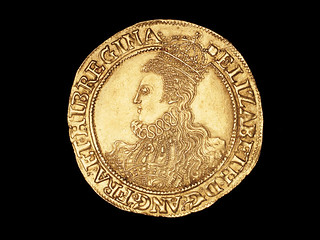
PREV ARTICLE
NEXT ARTICLE
FULL ISSUE
PREV FULL ISSUE
THE HISTORY OF WOMEN ON MONEY
An article in The New Yorker this week outlined the history of women on money through the ages. Here's an excerpt. Thanks to
David Sundman for sending the link. -Editor
The first non-mythological or allegorical woman to appear on a Roman coin was the third wife of Mark Antony, Fulvia Flacca Bambula (c. 83–40 B.C.), who wielded considerable influence during the rocky period of civil war following the assassination of Julius Caesar. While Antony was in Alexandria, consorting with Cleopatra, Plutarch writes, Fulvia was “carrying on war at Rome with [Octavius] Caesar in defense of her husband’s interests.” Around this time, the Roman mint issued coins depicting Fulvia as the goddess of victory, a recognition both of her service to Rome and of her skill as a leader, albeit as a proxy for Antony. Cleopatra, who ascended to the Egyptian throne, alongside her brother, after their father died in 51 B.C., was a rare example in the ancient world of a woman who held formal political leadership and appeared on coinage by virtue of her own official authority. Other women who appeared on Roman currency were honored largely because they were related to male leaders: Octavia the Younger, a sister of Augustus Caesar; Livia Drusilla, the mother of the Emperor Tiberius; and Antonia the Younger, a daughter of Mark Antony and Octavia. The same was true of the mothers, daughters, and sisters of powerful men who appeared alone on Byzantine coins. In their essay “The Gender of Money,” the University of Birmingham professor Leslie Brubaker and her student Helen Tobler argue that royal women made it onto coins in the Byzantine Empire because they represented the continuity of the dynastic line—a bulwark against upheaval and chaos. This association of stability with a coin bearing a woman’s face became more tangible in England centuries later, with the financial reforms introduced by Elizabeth I. At the time she was crowned, in 1558, the country’s currency had been drastically devalued. Her father, Henry VIII, had, in order to support his military campaigns against France and his personal extravagances, used one of the only methods available to monarchs to raise cash before the advent of national debt: minting coins with just a touch of silver and gold and circulating them at the same value as coins made entirely of precious metals. Once people caught on to the fact that the new coins were comprised primarily of copper, they began hoarding the old ones, which made it harder for the Crown to source gold. The copper coins also adversely affected foreign transactions, undermining confidence in the value of English currency and sullying England’s international reputation. After ascending to the throne, Elizabeth and her advisers William Cecil and Sir Thomas Gresham devised a rescue plan. The Royal Mint soon began to melt down the debased currency, and new coins, bearing Elizabeth’s impressive profile, were minted in precious metals. The currency was restored in the eyes of the public, and the crown earned the tidy sum of fifty thousand pounds (about twenty-two million of today’s dollars) via seigniorage. Elizabeth’s portrait on the new coins made literal the association between her person, her title, and the fiscal power of the country she ruled—a kind of financial body politic. Other powerful European women appeared alone on coins in Elizabeth’s wake, among them Anne of England (who ruled from 1702–1707), Maria Theresa of Austria (1740–1780), Catherine II (the Great) of Russia (1762–1796). As the historian William Monter notes, though, double portraiture was also common in Europe during those centuries, with monarchs such as Mary, Queen of Scots, depicted alongside their husbands. William and Mary, of England, and Ferdinand and Isabella, of Spain, also appeared in this style. To read the complete article, see:

Wayne Homren, Editor The Numismatic Bibliomania Society is a non-profit organization promoting numismatic literature. See our web site at coinbooks.org. To submit items for publication in The E-Sylum, write to the Editor at this address: whomren@gmail.com To subscribe go to: https://my.binhost.com/lists/listinfo/esylum All Rights Reserved. NBS Home Page Contact the NBS webmaster 
|
